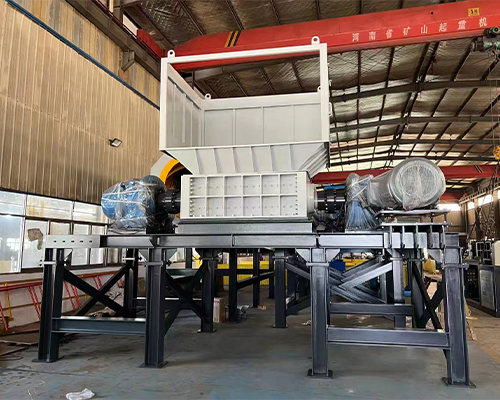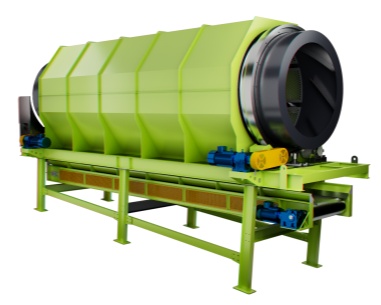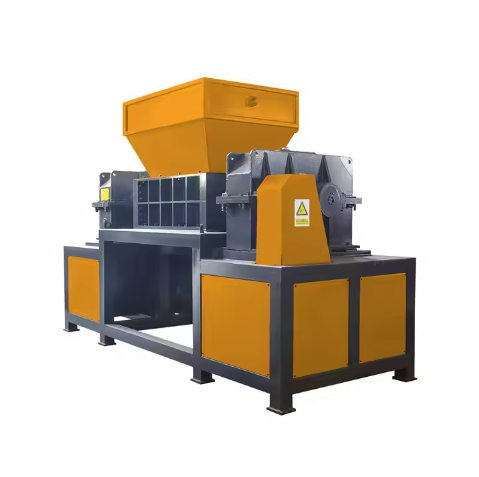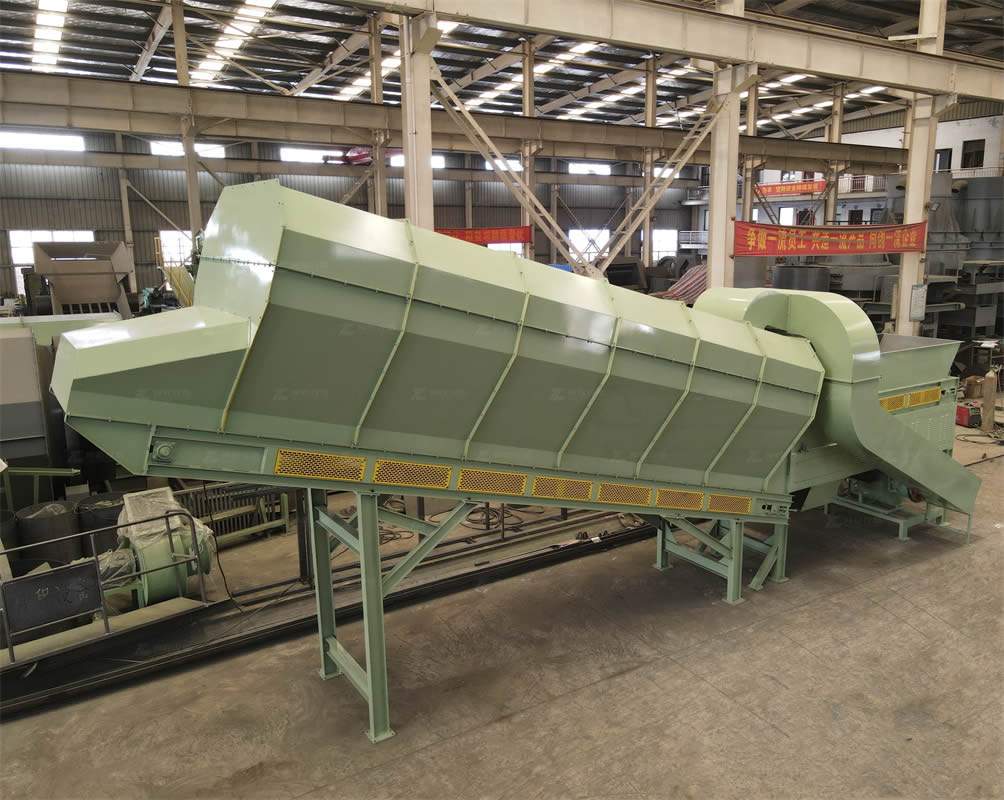The role of shredders in industrial industries
The role of shredders in industrial industries

Shredders play an important role in the industrial industry and are mainly used to process and recycle various types of waste materials. It is a powerful mechanical device capable of tearing bulky items or bulky waste into smaller pieces for subsequent processing, transportation or recycling. The following are the different aspects of the role of the shredder:
Waste reduction:
Shredders can significantly reduce the volume of solid waste, thereby reducing waste storage space requirements and reducing transportation costs.
Resource recovery:
By shredding waste materials such as plastic, rubber, wood, metal, etc. into small pieces, these materials are easier to sort, clean and reprocess, promoting the recycling of resources.
Preprocessing:
In some production processes, raw materials need to be shredded to a size suitable for further processing, such as before tire retreading or the pretreatment of fuels in biomass power plants.
Environmental protection:
The shredder helps reduce the pressure on landfills and reduces the impact on the environment; at the same time, by promoting resource recycling, it reduces the demand for original resources and protects natural resources.
Energy recovery:
For some wastes that are difficult to burn directly, such as large plastic products or mixed materials, they can be more effectively used for incineration to generate electricity or other forms of energy conversion after being shredded.
Safe handling of hazardous waste:
Specially designed shredders can also be used to safely process hazardous waste, such as medical waste or electronic waste, ensuring that these materials do not cause environmental pollution or pose a threat to human health during processing.
Improve economic efficiency:
Businesses can use shredders to reduce costs (such as reducing waste disposal bills), increase revenue (such as selling recyclable materials), and comply with environmental regulations, thereby improving overall economic efficiency.
Adaptable:
Modern shredders are usually highly flexible and can adjust shredding parameters according to different material types. They are suitable for a wide range of industrial fields, including but not limited to the packaging industry, automobile manufacturing, building demolition, wood processing, etc.
In short, shredders not only play a key role in waste management and resource recovery, but are also of great significance in promoting sustainable development and building a circular economic system. As technology advances, the design and functionality of shredders are constantly improving to better meet the specific needs of various industries.
| Model | 600 | 800 | 1000 | 1200 | 1400 | 1600 | 1800 |
| Motor(kw) | 11*2 | 18.5*2 | 35*2 | 45*2 | 55*2 | 75*2 | 110*2 |
Reducer | P6-P7 | P7-P8 | P8-P10 | P10-P12 | P11-P13 | P12-P16 | P14-P16 |
| Siemens or other motors, planetary reducers or other reducers can be customized according to customer requirements | |||||||
| Rotation Speed | 8-20rmp | 8-20rmp | 8-15rmp | 8-15rmp | 8-15rmp | 8-12rmp | 8-12rmp |
| Blades Diameter | 220-320 | 260-320 | 260-400 | 400-500 | 400-500 | 500 | 500 |
| Blades material | The material of the blades (55sicr, 5crsi, 9crsi, skd11, m6v, h13) can be customizedaccording to the customer's actual usage | ||||||
| Feeding Size | 1200*900mm | 1400*1000mm | 1600*1200mm | 1800*1300mm | 2000*1300mm | 2200*1700mm | 2400*2000mm |
| The size and appearance of the feeding hopper can be customized according to thecustomer's feeding situation | |||||||
| Weight(kg) | 1800 | 2500 | 3700 | 5500 | 7500 | 9500 | 13000 |
-
 Trommel screenTrommel screen, also known as drum screens, are widely used in various industries for sorting and separating materials.Get Quote
Trommel screenTrommel screen, also known as drum screens, are widely used in various industries for sorting and separating materials.Get Quote -
 Crop straw double shaft shreddApplications:Biomass Energy Production: Shredded straw can be used as a feedstock for bioenergy plants to produce electricity or heat.Livestock Feed: Reduced-si...Get Quote
Crop straw double shaft shreddApplications:Biomass Energy Production: Shredded straw can be used as a feedstock for bioenergy plants to produce electricity or heat.Livestock Feed: Reduced-si...Get Quote -
 Zhongcheng Air Drum SeparatorAir drum separators effectively separate lightweight materials (e.g., plastics, paper) from heavier materials (e.g., metals, glass). This high efficiency is cru...Get Quote
Zhongcheng Air Drum SeparatorAir drum separators effectively separate lightweight materials (e.g., plastics, paper) from heavier materials (e.g., metals, glass). This high efficiency is cru...Get Quote
-
2024-08-28Scrap rubber product shredderThe shredder of waste rubber products not only helps to reduce environmental pollution, but also improves the reuse rate of waste rubber, which is one of the im...
-
2024-07-10msw trommel screen for waste recycling machineThis equipment is suitable for the particle classification process in all walks of life:The equipment is simple, easy to operate,and can be operated with a larg...
-
2024-08-12The Advantages of Horizontal Baling TechnologyA horizontal baler, also known as a horizontal baling machine, is a piece of equipment used for compressing materials and wrapping them into bales. This process...
-
2024-05-18Hydraulic Cone CrusherHydraulic Cone Crusher integrates machinery, hydraulic pressure, electrics, automation, and intelligent control, which can be used for medium crushing, fine cru...
-
2024-08-20A rubber double shaft shredderExamples of Specific Models:GDB Series Biomass Shredder: Although primarily designed for biomass materials, this model can also be configured to handle various ...



